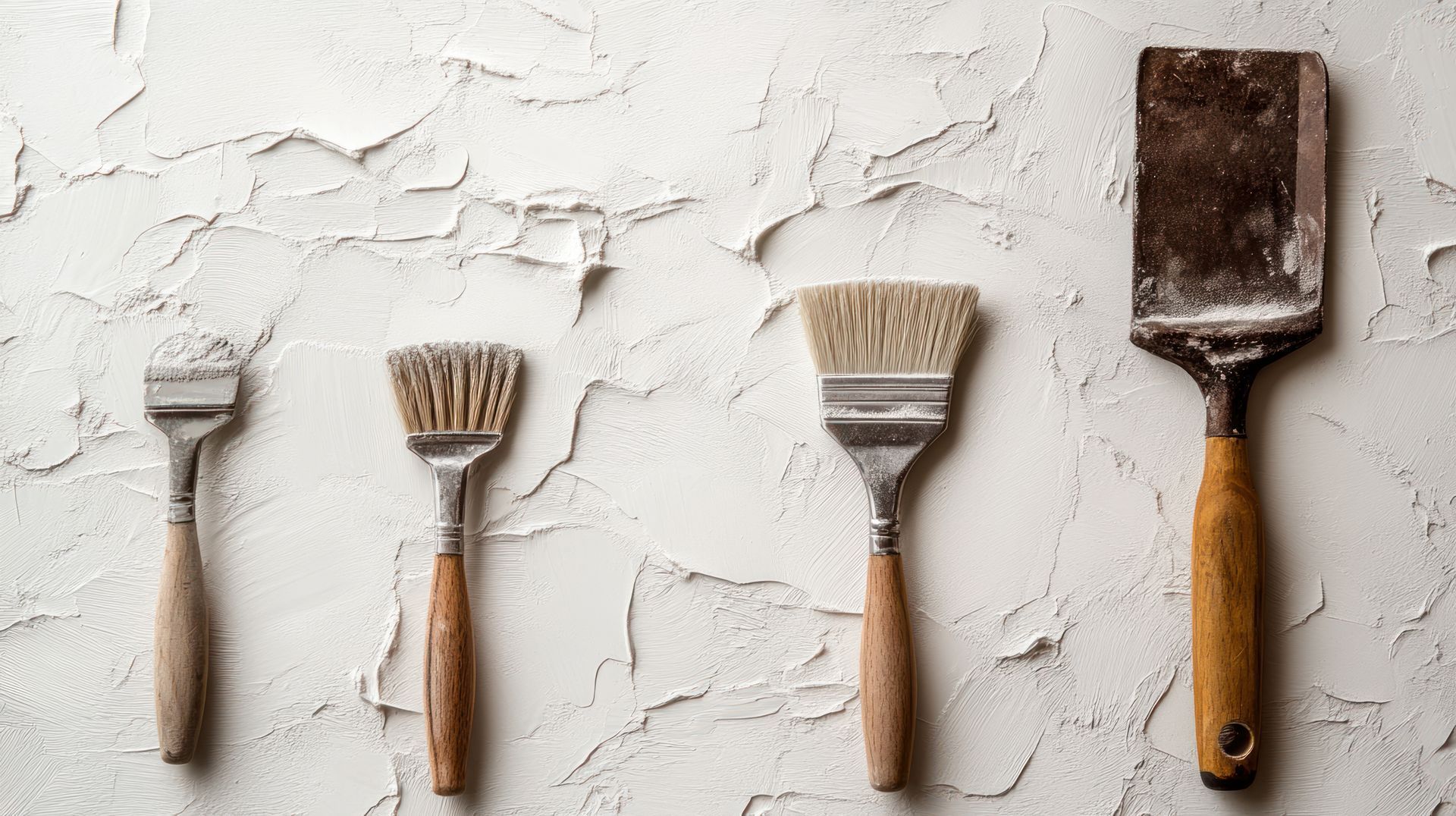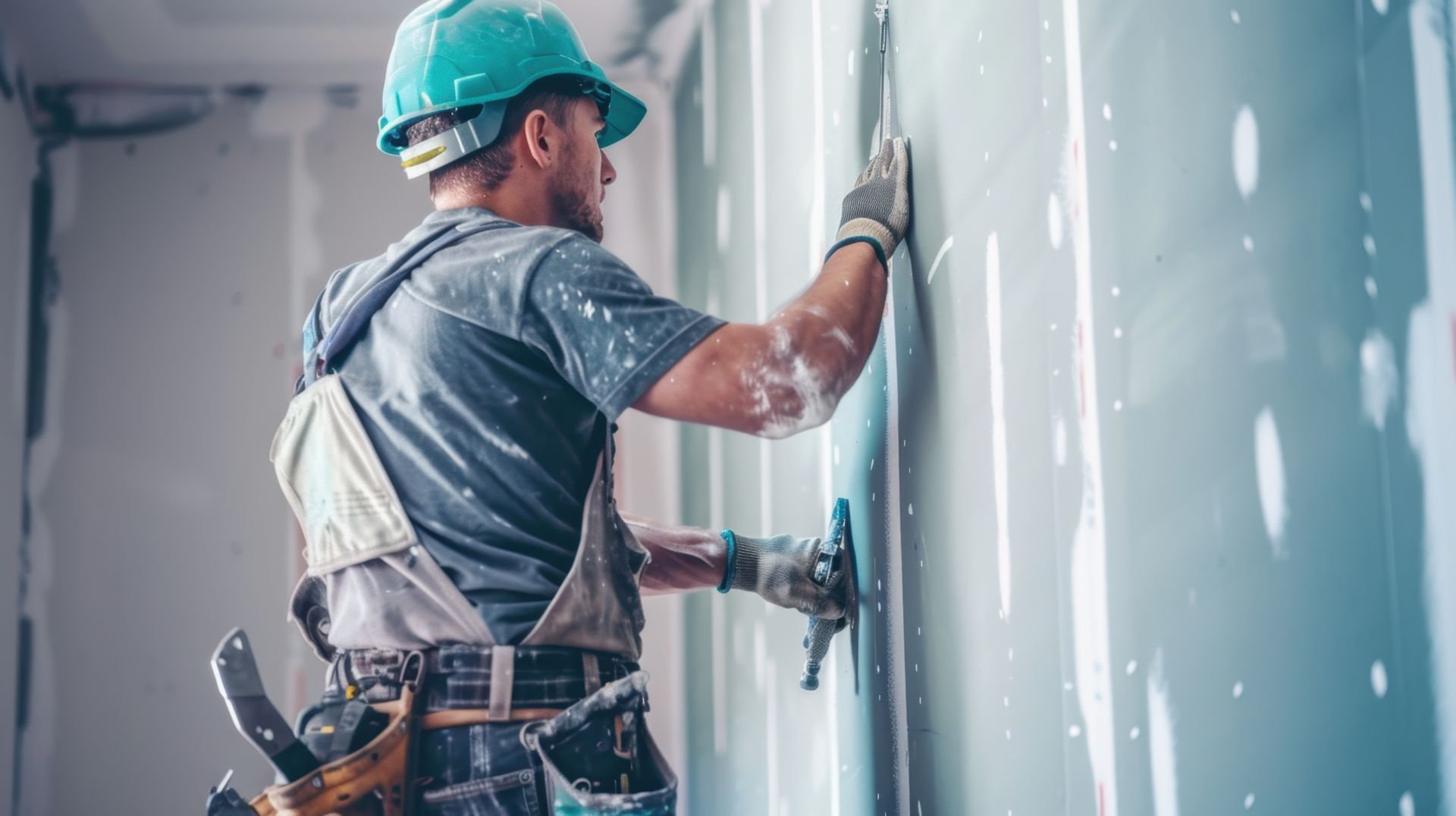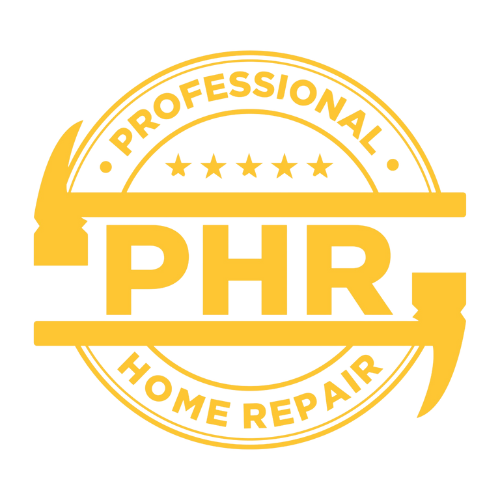Master Drywall Repair: Tools And Materials Guide

Dealing with drywall damage? It could be a small hole or a big crack. Either way, it's important to know the right tools and materials. This guide will help you learn the basics of drywall repair. You will find out about the tools and materials you need. It will also tell you when it's a good idea to call a professional drywall repair Phoenix company for help and a free quote. Our goal is to give you the confidence to handle your drywall repair project easily.
Understanding Drywall Damage And Repair Needs
Before looking at the tools and materials, it's important to know some basics about drywall and the damage it can face. Drywall, also known as sheetrock, is commonly used in many homes today. It has a core made of gypsum, which is placed between two thick layers of paper, and with various finishes such as knockdown, this forms the walls and ceilings we often overlook.
Over time, drywall can get damaged in several ways, including from a roof leak. You may see cracks, holes, or water damage among other problems. By learning about these common issues, you can better understand how bad the damage is and how to fix it.
Identifying Common Types Of Drywall Damage
Different situations can cause drywall damage. Each type needs a different way to fix it. Here are some common kinds of damage:
- Stress Cracks: These small cracks show up around doors or windows. They often happen because the house settles, changes in temperature occur, or there are minor shifts in structure. Luckily, they are easy to fix.
- Holes: Holes in your drywall can be made by slamming doors, accidental bumps, or past repair efforts. Depending on how big they are and where they are located, you might just need to patch them or replace part of the drywall.
- Water Damage: This type of damage can be caused by leaky roofs, plumbing problems, or too much humidity. Because the gypsum core in drywall can absorb water, fixing this damage often means you have to remove and replace the affected parts. This is important to stop mold from growing.
Assessing The Severity Of Damage For Appropriate Repair
While small drywall repairs can be done by homeowners, some situations need help from professional drywall repair contractors. It is important to understand how bad the drywall damage is to decide what to do next.
Small cracks and little holes can usually be fixed by yourself with simple tools and methods. But serious damage, especially from water or other structural problems, should be handled by experts.
If you are unsure, getting an opinion from a good drywall repair company like our drywall professionals can help you a lot. We can ensure your repair work is safe, effective, and done to the best way high standard. Our repair services are quick and reliable, so your drywall problems can be solved in a timely manner.
Essential Tools For Drywall Repairs
Having the right tools can really help your drywall repair go smoothly. The tools you need can change based on how hard the repair is. However, there are some key tools that every DIYer should have.
These basic tools are important for most common drywall repairs. They make the job easier and give better results. Plus, you can use them for many other home projects. This makes them a good investment for any homeowner.
Basic Tools Everyone Should Have
- Utility Knife: This tool is important for cutting drywall, drawing lines, and trimming pieces. Choose a model with a retractable blade and replaceable blades for safety and ease.
- Taping Knives: These knives are for applying, spreading, and smoothing drywall compound. A 6-inch knife works well for small repairs. A 10-inch or 12-inch knife is better for larger surfaces.
- Drywall Sanding Block or Pole Sander: This tool is key for getting a smooth look after using drywall compound. Look for sanding blocks that have different grits for all stages of the sanding process.
- Mud Pan: This tool helps hold and mix drywall compound. Choose a pan with a wide, flat base to make scooping and mixing easy.
- Putty Knife Set: A set of putty knives in different sizes is very useful for applying and smoothing small amounts of drywall compound.
Specialty Tools For Complex Repairs
Some drywall repair jobs need special tools for a smooth and professional finish. If your project had a lot of damage or needs complex techniques, think about using these tools:
- Drywall Router: This tool cuts exact openings for electrical boxes, outlets, or other fixtures.
- Drywall Screw Gun: Made for quickly and efficiently driving drywall screws. It is very helpful for big repairs or installations.
- Corner Trowel: This tool helps make perfectly smooth corners. It makes finishing inside and outside corners easier.
If you are not sure about using any of these tools or if your drywall repair is too complex, you can reach out to a good drywall company like ours that specializes in Mesa drywall repair, including services in Gilbert. Our skilled team provides great repair services and will make sure the job is done well.
Must-Have Materials For Repairing Drywall
Using the right materials is just as important as having the right tools for your drywall repairs. When you know the different types of drywall compound and tape, you can pick the best options for your needs.
Make sure the materials you choose can match well with your existing drywall and wall texture. This will help create a smooth finish and avoid any noticeable flaws, so your repair looks professional. Also, remember that high-quality materials result in stronger and longer-lasting repairs.
Drywall Tape Varieties
Drywall tape is very important. It helps to fill gaps, strengthen seams, and stops cracks from coming back after repairs. The type of tape you should use depends on how bad the damage is and where it is located. Here are the most common types for different repair needs:
- Paper Tape: This is the most usual and affordable option. It works well for most drywall repairs. You usually use it with all-purpose or dust-control drywall compound.
- Mesh Tape: This is made from fiberglass. It sticks on its own and is liked for being strong. It does not shrink or bubble easily.
- Fiberglass Tape: This tape is very strong. It is used for bigger holes or repairs with larger gaps. It is usually added in a setting-type compound, which helps it stick better.
By knowing the differences between these types of drywall tape, including orange peel, you can choose the best one for your repair needs. This will help you get a strong, long-lasting, and good-looking repair.
Step-by-Step Guide To Drywall Repairs
With the right tools and materials, you can fix those annoying holes, cracks, and dents in your drywall. Knowing some basic drywall repair techniques will help you get started. Just follow these simple steps to make your drywall look great.
Take your time with each step, and remember to let the repairs dry completely before adding more layers. Practice is important, so try fixing smaller areas first. This will help you build confidence before moving on to bigger repairs and ensure you do a great job. Click Textured Drywall Repair: A Guide By Professional Home Repair for more details.
Preparing The Damaged Area
Before you apply any patching material, it is very important to prepare the damaged area. This step helps make sure that your drywall repair goes smoothly. If you skip this, you may have problems with how things stick or see bumps and cracks coming back.
Start by cleaning the area around the damage. Use a damp cloth to wipe away dust, debris, or loose plaster. If there is mold or mildew, treat that area with a good fungicide first. For larger holes or heavy damage, check the framing behind the drywall to see if it needs repairs.
If you have holes or cracks with loose edges, use a utility knife to make clean, straight edges around the damage. This will help the patch stick better and make the final look smoother.
Applying Drywall Compound And Tape
Once you clean and prepare the damaged area, start applying a thin layer of drywall compound. Spread it out gently around the edges. Next, push your drywall tape firmly into the wet compound. Make sure the tape lies flat and smooth against the wall. Do not stretch the tape, as this can cause cracks when it dries.
After the first layer of compound and tape dries completely, you can apply a second coat. This coat should be wider than the first, blending smoothly into the rest of the wall. If needed, you can add a third coat for a perfect finish.
Once the final coat dries, softly sand the area to make the patch blend in with the wall. Use finer sandpaper for a smooth and polished look.
When To Call Professional Home Repair
While small drywall repairs can be done by homeowners, some cases need the help of drywall experts. Knowing when to call a good drywall repair company is important, especially regarding the type of drywall involved. It helps to make sure the work is done properly, which keeps your walls looking nice and prevents problems later.
If you have major damage, water damage, or think there might be mold, you should contact Professional Home Repair. Hard repairs need special skills and knowledge. This ensures they fix the problems correctly and stop more issues in the future. These situations often mean you will need to remove and replace parts of the drywall, fix hidden issues, and maybe deal with electrical or plumbing systems.
Also, if you are not sure about your DIY skills or if you don’t have enough time and tools, calling a Phoenix AZ drywall repair company like ours is a wise decision. Our team has the skills, tools, and knowledge to handle any drywall problem. We give great customer service and do a fantastic job to bring back the beauty of your walls.
Conclusion
Repairing drywall can be easy if you have the right tools and materials. First, it is important to understand the types of damage. Next, check how severe it is. Then, use the right compounds and tapes for the job. Whether you need simple repairs or more complicated fixes, having the right tools is very important. However, if the damage is complex or large, it is a good idea to ask for professional help. A well-kept home shows that you care and pay attention to details. If you need help or advice with drywall repairs, please
contact our team. Your home deserves the best care!
You might also like
Professional Home Repair Blog





